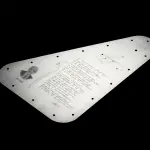Key Takeaway:
- Saturn’s rings are fading.
- According to new data from NASA’s former Cassini probe, the rings will disappear 200 million years earlier than previously thought.
- We explain what’s happening with Saturn’s rings and why they’re fading quicker than expected.
If you had to pick Saturn out of a lineup, you’d probably know it by its distinctive rings. They’re the largest and brightest rings in our solar system. Extending over 280,000 kilometers from the planet and broad enough to accommodate six Earths in a row. Saturn, however, will not always appear like this. Because the rings are vanishing.
Saturn is losing its rings! And quickly. Much quicker, even, than experts had previously anticipated. Saturn now receives 10,000 kg of ring rain each second. Quick enough to fill an Olympic-sized pool in half an hour.
Saturn’s rings have dissolved, and this shower is the result. Saturn’s rings are largely composed of ice and rock. Which are constantly bombarded: some by UV light from the Sun, others by small meteoroids.
When these impacts occur, the frozen particles melt, generating charged water molecules that interact with Saturn’s magnetic field before falling into Saturn and burning up in its atmosphere.
We’ve known about ring rain since the 1980s, when NASA’s Voyager spacecraft discovered enigmatic, black bands in Saturn’s magnetic fields. Back then, experts predicted that the rings would completely empty in 300 million years. However, findings from NASA’s previous Cassini mission suggest a less optimistic outlook. Cassini was able to obtain a clearer look at the quantity of ring dust showering on Saturn’s equator before to its 2017 death plunge.
And learned that it was pouring more heavily than previously believed. With these sharper findings, scientists estimated that the rings had just 100 million years remaining to survive. Now it’s difficult to envision Saturn without rings.
However, throughout the most of its existence, the planet was as bare as Earth. While Saturn originated around 4.5 billion years ago, research show that the rings are just 100-200 million years old at most. That is younger than some dinosaurs.
So, in retrospect, we were quite fortunate to have witnessed those wonderful rings. Actually, I consider myself really fortunate. Because our attempts to investigate those rings led us to additional findings.
Cassini, for example, discovered an ice and gas track that led back to Saturn’s E ring while exploring Saturn’s moon Enceladus. Enceladus is the whitest and most reflective moon in our solar system.
Scientists now understand why after closer examination of the ring. It turns out that the moon is continually emitting gas and dust.
Some of it winds up in space and the E ring, while the remainder snows back onto the moon’s surface, forming a blinding white frost.
So, who knows what further discoveries may lie within the rings? At the very least, it is evident that we should keep seeking while we can.


